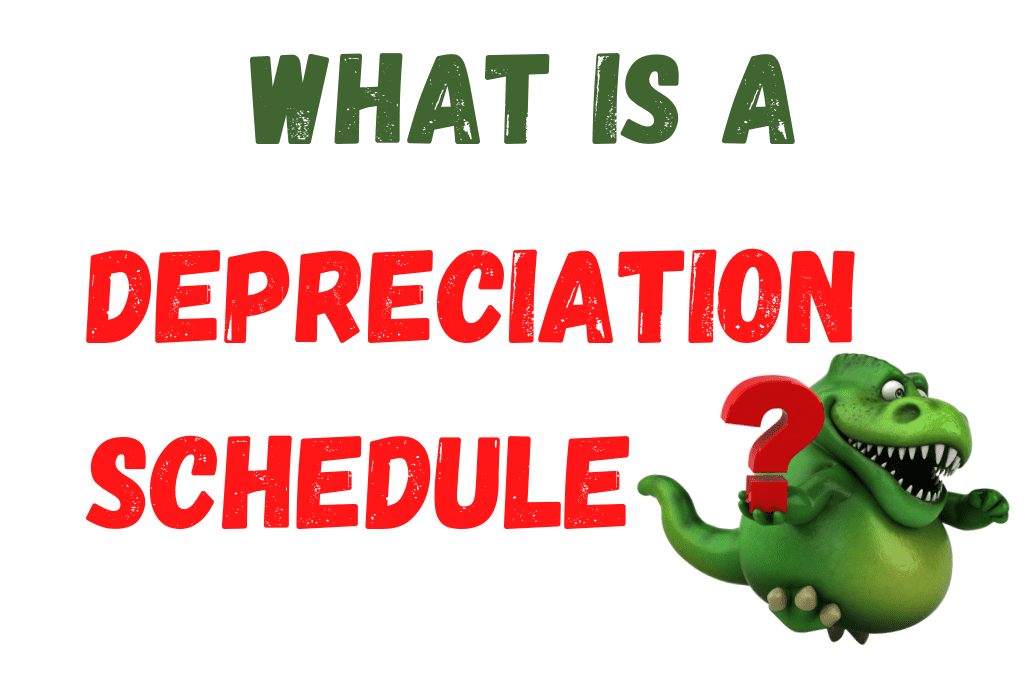A Depreciation Schedule is a listing of every Fixed Asset a company owns. It includes the following for each asset:
- Asset Name (2015 Ford F150, Hobart Mixer, Hyster Forklift)
- Any identifying information like a Vehicle Identification Number or an Asset tag number)
- Date the asset was placed in service
- Cost of the asset
- Class life of the asset
- Method of Depreciation being used (each asset can have a different method)
- Estimated Salvage Value
- Current Year Depreciation
- Accumulated Depreciation
- Net Book Value
Companies with large numbers of Fixed Assets (think about UPS and its fleet of vehicles, planes, buildings) can group like assets together on the Balance Sheet, but a Depreciation Schedule is used to track each individual asset behind the scenes.
| Asset | Date of Service | Cost | Life | Method | Salvage | CY Depreciation | Acc. Depreciation | NBV |
| 2020 Ford F150 | 8/1/20xx | 15,000 | 5 | Straight Line | 500 | 2.900 | 8700 | 6,300 |
| Hobart Mixer | 7/1/20xx | 20,000 | 7 | DDB | 2,000 | 5,715 | 5715 | 14,285 |
| Totals | 35,000 | 2,500 | 8,615 | 14,415 | 20,585 |
Note that the Depreciation Schedule amounts tie out (match) to the amounts on the Balance Sheet for Cost, Accumulated Depreciation, and Net Book Value. This is an important reconciliation to ensure no mistakes were made in recording depreciation.
| 2020 Ford F150 | 15,000 |
| Accumulated Depreciation | (8,700) |
| Net Book Value | 6,300 |
For more articles about depreciation methods, check out the following:
-
Difference Between Depreciation, Depletion, Amortization
In this article we break down the differences between Depreciation, Amortization, and Depletion, discuss how each one is used, and what the journal entries are to record each. The main
-
Adjusting Journal Entries | Accounting Student Guide
When all the regular day-to-day transactions of an accounting period are completed, the next step is to check on the balances of certain accounts to see if those balances need
-
What is a Contra Account?
A contra account is an account used to offset the balance in a related account. When the main account is netted against the contra account, the contra account reduces the
-
How to Calculate Straight Line Depreciation
Straight-line Depreciation is used to depreciate Fixed Assets in equal amounts over the life of the asset. The basic formula to calculate Straight-line Depreciation is: (Cost – Salvage Value) /
-
How to Calculate Declining Balance Depreciation
Declining Balance Depreciation is an accelerated cost recovery (expensing) of an asset that expenses higher amounts at the start of an assets life and declining amounts as the class life
-
How to Calculate Units of Activity or Units of Production Depreciation
Units of Activity or Units of Production depreciation method is calculated using units of use for an asset. Those units may be based on mileage, hours, or output specific to

